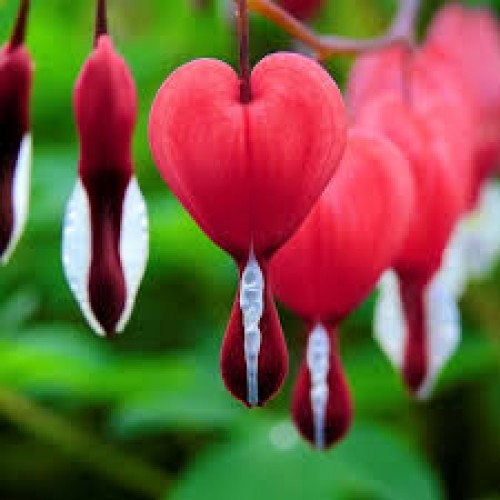60%
off
off
-
Sold
-

-

out
Bleeding Heart Plant (Lamprocapnos spectabilis)
Overview
The Bleeding Heart is a perennial plant native to Asia, celebrated for its distinctive heart-shaped flowers that dangle gracefully from arching stems. Blooming in spring, it adds a romantic touch to shaded gardens.
Characteristics
- Height & Spread: Typically grows 2–3 feet tall and wide.
- Flowers: Heart-shaped blooms in shades of pink, red, or white, appearing in spring.
- Foliage: Fern-like, light to medium green leaves.
- Growth Habit: Clumping with arching stems.
- Bloom Time: Late spring to early summer.
- Hardiness Zones: USDA zones 3–9.
Care & Maintenance
- Light: Prefers partial to full shade; morning sun with afternoon shade is ideal.
- Soil: Moist, well-draining, fertile soil with a slightly acidic to neutral pH (6.0–7.0).
- Watering: Keep soil consistently moist but not waterlogged.
- Fertilization: Apply a balanced, slow-release fertilizer in early spring.
- Pruning: Remove spent flowers to encourage more blooms; cut back foliage after it turns yellow and dies back post-blooming.
- Propagation: Divide clumps every 2–3 years in spring or fall.
Uses & Advantages
- Ornamental Appeal: Adds aesthetic value with its unique flowers and foliage.
- Pollinator Friendly: Attracts bees, butterflies, and hummingbirds.
- Shade Tolerance: Thrives in shaded areas where many plants struggle.
- Companion Planting: Pairs well with hostas, ferns, and astilbes.
- Cut Flowers: Excellent for floral arrangements.
Precautions
- Toxicity: All parts are toxic if ingested; can cause skin irritation.
- Pests & Diseases: Susceptible to aphids, slugs, snails, and fungal diseases like powdery mildew.
Ideal Growing Conditions
- Climate: Cool to temperate climates with temperatures between 55°F to 75°F (13°C to 24°C).
- Planting Time: Spring after the last frost or in early fall.
- Spacing: Space plants 18 to 24 inches apart to ensure good air circulation.
Live Plants
Customer Question & Answers
Don't get what you are looking for? Ask Question